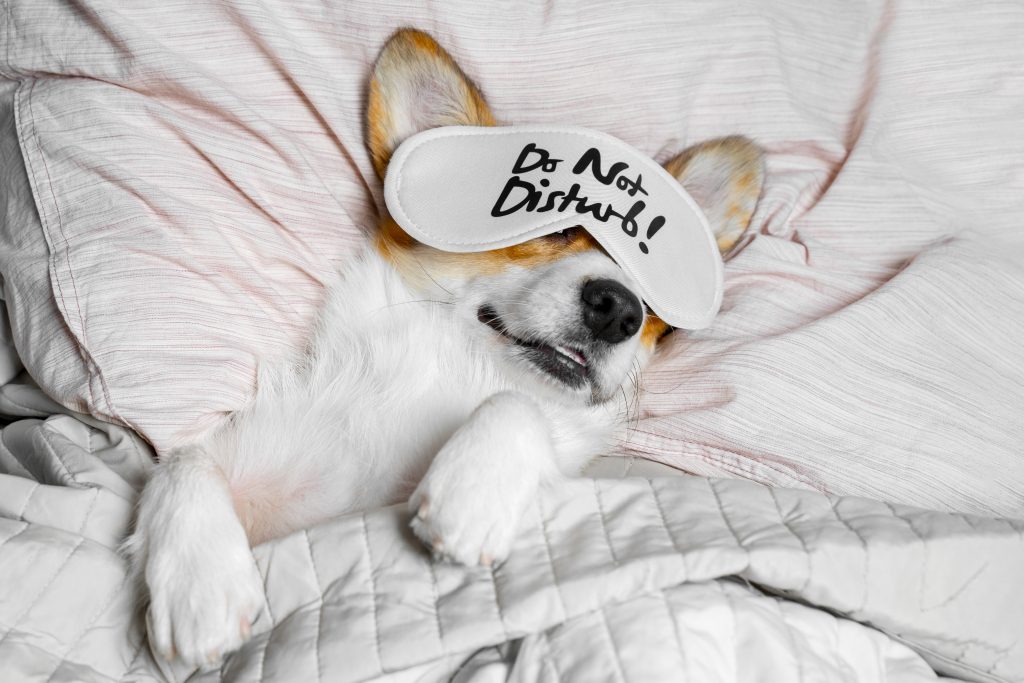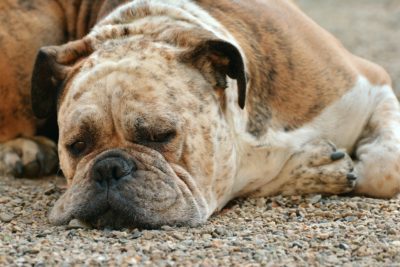
If you’ve got a pet pooch, you’re probably used to them spending lots of time snoozing — dogs of all ages get 12 to 14 hours of sleep a day. According to the American Kennel Club, that means that our canine pals spend as much as half of their days off in doggy dream land.
As if dogs weren’t amazing enough, get this–they can actually fall asleep at a moment’s notice, snoozing at nighttime as well as throughout the day. (The scientific term for that sleep pattern is polyphasic sleep) Puppies and older dogs tend to need more sleep and have less regular sleeping habits. The AKC also notes that bigger breeds spend more time asleep, and puppies can sleep as much as 20 hours per day as they’re growing and developing.
Dogs get a lot of REM sleep, according to a 1977 study published by the journal Physiology & Behavior. During REM sleep, dreams are typically more vivid, fantastical, and/or bizarre, making those running dog legs that happen when your pooch is asleep make much more sense.
The canine sleep cycle mimics that of a human, but the AKC notes that dogs tend to enter the rapid eye movement (REM) phase within 10 minutes, where humans take about an hour and a half to get to that deep sleep phase. Plenty of things can impact your pet’s ability to secure quality sleep, including sickness and/or injury, daytime activity level, and even how much they socialize with other dogs and humans can affect whether or not they get enough sleep. Just as you have sleepless nights, so can your pooch!
The amount of sleep your dog needs can change not only due to age but also due to overall health, and getting enough sleep is just as important for your furry friends as it is for you. Quality z’s help support their immune system, brain function, and memory-making skills.
Establishing a regular sleep routine is important both for you and your pet, whether you’ve just welcomed a new puppy into your life or your senior dog is slowing down a bit in their golden years. If, at any age, your dog is experiencing behavioral changes, such as increased stress, anxiety, or aggression, or if they have an underlying health condition, such as arthritis, diabetes, bladder issues, a thyroid disorder, or others, check in with your vet. They can help you best navigate your beloved pet’s needs so they can enjoy the comfortable sleep they deserve.
Tips To Keep Your Pooch Well-Rested
A well-rested dog is a more relaxed and happy dog. With regular sleep, they learn new commands more easily, are easier to train and are just plain healthier. Following a few simple tips can help your dog get enough sleep.
Establish a Routine
Changes in routine can affect a dog’s sleep and stress levels. Establish a daytime and bedtime routine, and stick with it.
Make Time for Play and Exercise
Playing and exercising together offers two benefits: it strengthens your bond and tires your best friend out.
Make Bedtime Relaxing
At night, turn off the television and dim the lights. Some dogs like to sleep with their favorite toy or even blankie.




